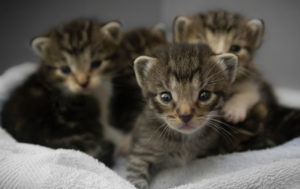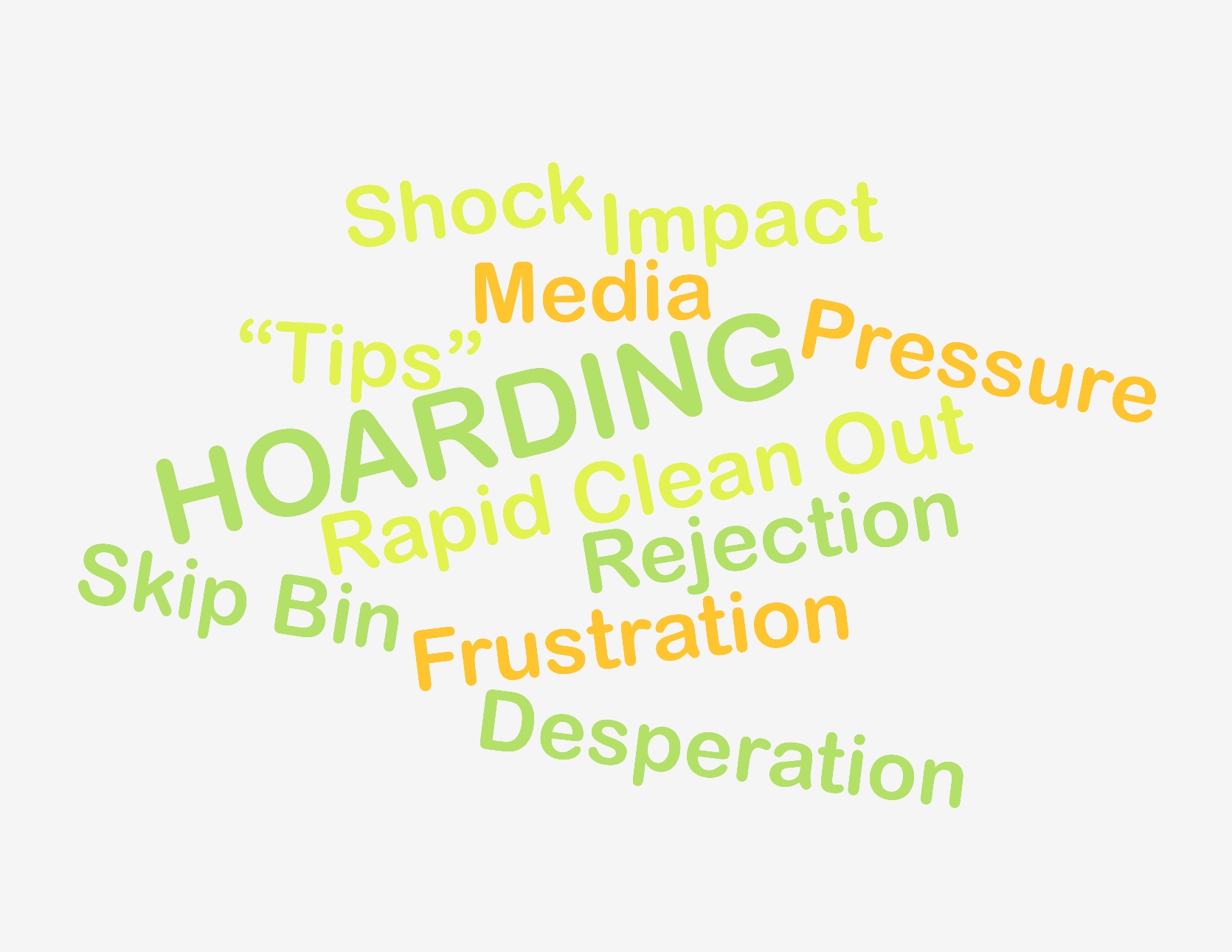We are grateful to RSPCA Victoria for contributing to our online training. They have provided detailed information which is now incorporated into module 11 of the Hoarding Home Solutions training. It includes education about how to recognise animal hoarding, the dangers animal hoarding poses to both animals and people, what to do if you come across a case of animal hoarding, and the legal obligations for both pet owners and the RSPCA themselves. As well, there is a case study to demonstrate how this education works in practice.
If you are concerned about animal hoarding, read this explanation from RSPCA Victoria about understanding and identifying animal hoarding.

Definition: Someone who accumulates a large number of animals; fails to provide minimal standards of nutrition, sanitation, and veterinary care; and fails to act on the deteriorating condition of the animals or the environment or the negative effect of the collection on their own health and well-being and on that of other household members (Ref: The Hoarding of Animals Research Consortium).
Animal hoarders often fall into one of the following three categories, but can sometimes exhibit characteristics across categories:
- The overwhelmed caregiver initially provides adequate care for the animals and believes that while a problem has slowly developed, it’s not as serious as others think it is. The overwhelmed caregiver may be socially isolated but is willing to accept intervention.
- The rescue hoarder develops a compulsion based on a strong desire to rescue animals from possibly deadly situations, actively acquiring animals, believing no one else is capable of caring for them. They often work with a network of enablers, gaining proximity to the animals and finding it difficult to refuse to take in any new animals.
- The exploiter hoarder takes in animals to serve their own needs and is indifferent to any harm caused to the animals. Typically denying a problem exists, this type of hoarder rejects authority figures or any outside help and has a strong need to be in control while expressing very little remorse or guilt. They may continue to acquire animals over time.
Sometimes animal hoarders act as individuals and at other times they present as an animal rescue service. They may have an overwhelming sense of responsibility for the animals, believing they have an innate ability to communicate and empathise with them
Compromised animal welfare is at the core of all hoarding cases. Sometimes the suffering is obvious to a lay onlooker (starving or dead animals, untreated wounds, obvious infectious diseases), and other times it may be less obvious although no less important;
- Lack of opportunities for socialization
- Inability to avoid or retreat from other animals who pose a threat;
- Confinement for excessive periods or in extremely restricted space such as small kennels or crates;
- Inability to maintain normal postural adjustment (stretch out fully, stand upright without any body part touching walls or ceilings);
- Uncomfortable surroundings due to filth, dampness, heat, cold, hardness and unnatural light cycles (excessive darkness or constant light) are all factors that individually can cause significant or chronic stress because all animals experience stress at some point.
When present collectively, the cumulative effect of these various stressors can cause considerable mental and physical distress. The larger the population of animals being cared for, the more precise the caregiving must be in order to maintain health and prevent unnecessary suffering.
Almost every conceivable type of animal can be a victim of hoarding. Reports have documented a wide range of companion animals such as cats, dogs, rabbits, ferrets, birds, and guinea pigs, to farm animals (horses, sheep, goats, chickens, cattle), to exotic and sometimes dangerous wildlife.
Domestic species are the largest group of animals represented in hoarding cases and include dogs, cats, birds, rabbits, guinea pigs and horses.
Cats are very common and contribute to the stereotype. They are easily available in any community and easier to conceal than dogs. This ease of availability and concealment could explain the high frequency of cat hoarding compared to some other species.
It is not uncommon for multiple species to be present, although in most situations, hoarders tend to concentrate on one species.
To learn more about the Hoarding Home Solutions online training, click here.








